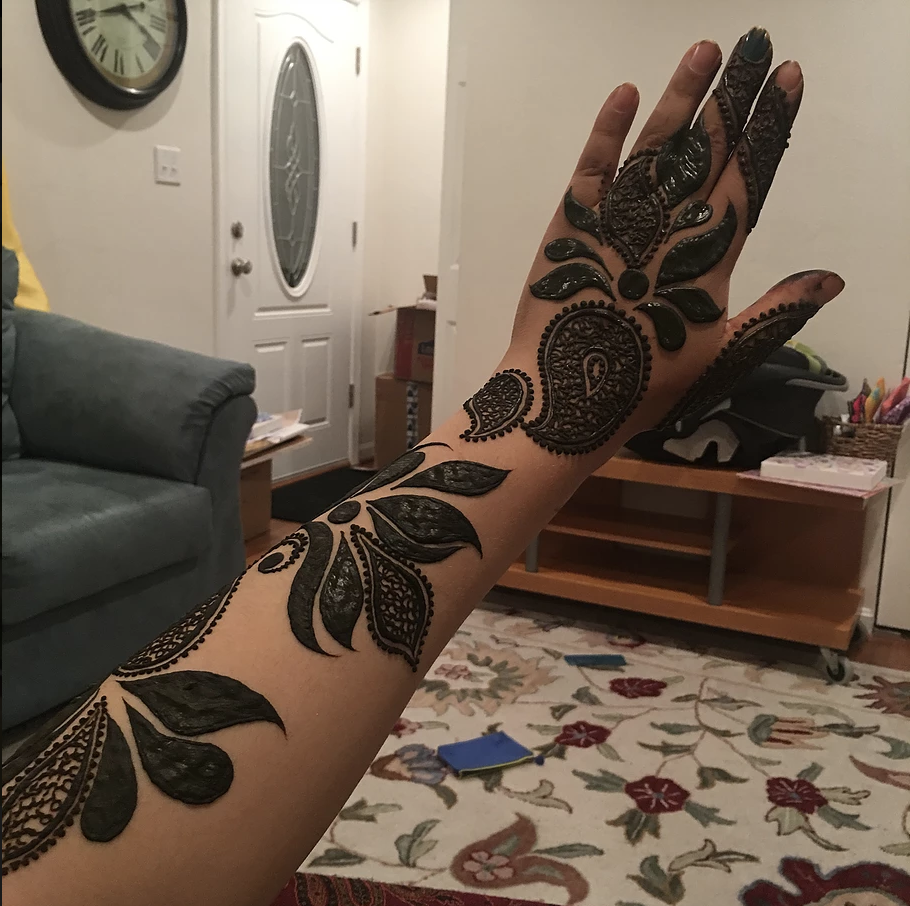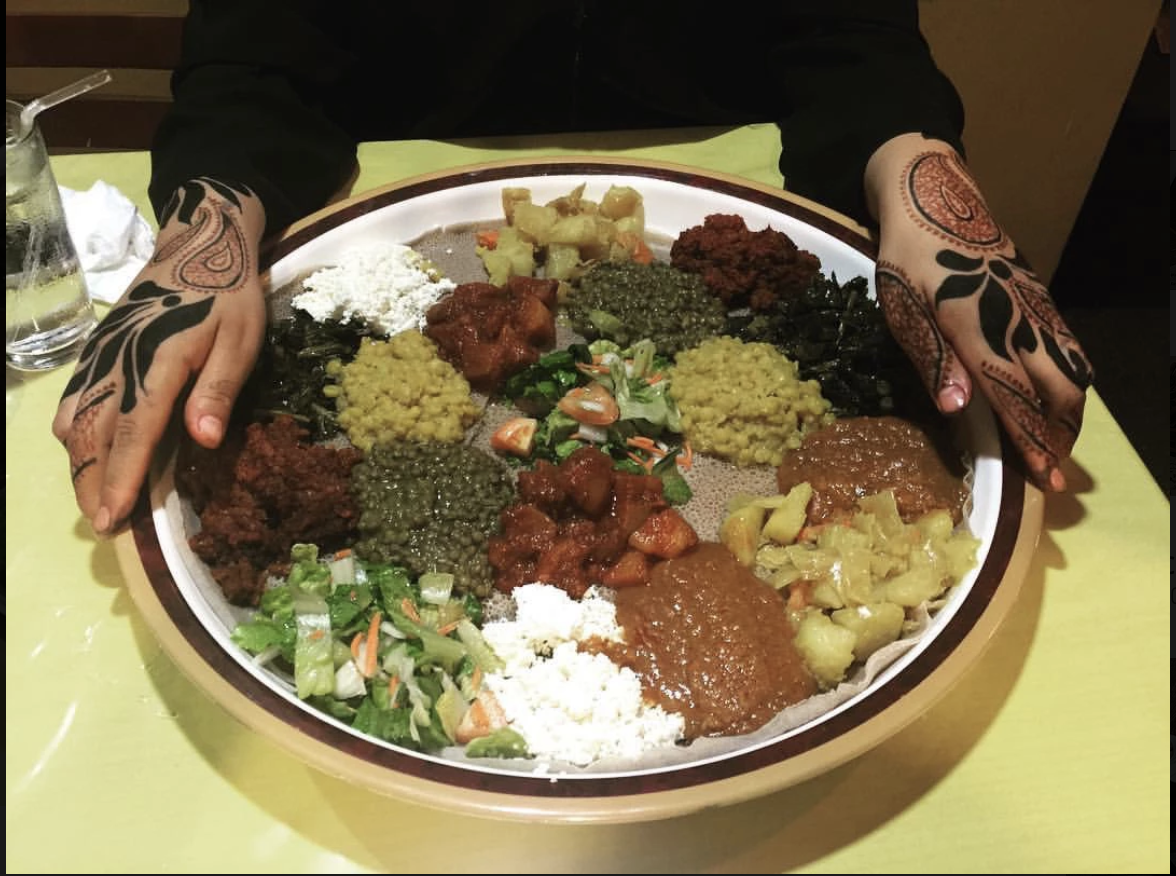We Need to Talk About Jagua...
Things have been stirred up within the henna community, and cool, black stains are to blame.
By now you've learned that #hennaisneverblack, and you've likely come to love the deep, rich color of natural henna stains. Just as you've cozied up to the idea that natural henna yields warm cherry or mahogany stains on the skin, jagua hits the scene.
Jagua (or genipa americana) is a fruit found in the tropics ranging from Central America and the Caribbean through the Amazon rainforest in Brazil. It has been used for centuries by the native inhabitants of these regions both to create beautiful tribal body art and as an insect repellent The juice from this fruit provides a deep blue-black color, and can be manipulated to provide a number of hues when mixed in varying ratios with henna powder or paste.
While jagua made its way into the body art community here within the United States some years ago, the practice of mixing it with henna for new and vibrant colors on the skin took hold only within recent years - taking on a bold life of its own around 2015.
Suddenly, this henna + jagua hybrid (often called hengua) was placed at the forefront of our industry, and everything you thought you knew about natural henna stains went flying out of the window.
Today a number of professional henna artists around the world have turned to offering henna, jagua, and hengua to their clients; providing a myriad of tones and depths of color with each stain. While some artists wholeheartedly embrace both jagua and the hengua hybrid as an opportunity to offer a safe alternative to the incredibly dangerous "black henna," others choose to avoid jagua and its byproducts for fear of creating confusion about what substances are (and are not) safe for body art.
Img. 1 Both henna and hengua (a jagua + henna blend) pastes shown applied here to create a two-tone design; Img 2. Here you can see the developed color of both the henna and the hengua at approximately 24 hours after application
Interestingly enough, while henna is not officially recognized as safe for use on skin within the United States, jagua is currently an authorized plant substance that is permitted for use in food according to the FDA - serving as a natural food dye in some cases. Nonetheless, while the odds of incurring an adverse reaction to henna are incredibly minute, jagua is known to cause skin reactions, particularly in people who have a history of topical dermatitis, eczema, or allergies to berries. Also, when jagua is removed with warm water, complications may arise.
These sorts of details have caused much debate within the henna community about the use of both jagua and hengua and creating a divide between both the old school and the new.
It is my opinion that each artist has the right and the say-so to determine what best fits his/her business, including whether or not to provide the options of jagua and/or hengua to their respective clients. The purpose of this piece is not to influence any individual in one way or another. Similarly, if a client enjoys and prefers the cool blue-black stain of jagua over the warm chestnut tones of henna, then this is certainly their prerogative.
The purpose of this post is solely to inform on and address the following points:
1. Jagua (and hengua) are easy to mistake with the same harmful "black henna" and otherwise mass produced products that are known to contain harsh chemicals.
CLIENTS: As always, ask your artist if they make their own paste. If they do not, then find out where they source their products. Don't take the risk of allowing anyone to place any product on your skin without this information.
ARTISTS: Jagua must be processed prior to being sold for use. Verify with your jagua provider that they are processing each batch personally, and obtain a copy of the ingredients in each batch for your records.
2. Jagua does not stain the nails as henna does.
CLIENTS: If your artist is boasting a black stain that includes the nails, know that jagua is likely not being used. "Black henna," which is manufactured with black hair dye, does stain the nails. "Black henna" is substantially cheaper to prepare than jagua is. Sadly, there are bottom rate artists who choose to use this harmful substance and call it jagua in an attempt to make an extra dollar. If you notice black stained nails, take caution.
ARTISTS: There's no way around saying this - if you are using "black henna" as a jagua counterfeit, then you should be ashamed of yourself. There are vendors who provide excellent quality jagua out there. If you cannot afford to provide this service safely and ethically, then perhaps this business is not for you.
3. Jagua stains blue-black, not flat black.
CLIENTS: Take note that just as with henna, stain colors cannot be guaranteed. While some may develop a deep, cool black color stain, others may have a navy-blue shade or even a blueish grey. Flat or dull black stains (imagine Sharpie on skin) are almost always indicative of the use of "black henna." When in doubt, just pass.
ARTISTS: Again, it is important that you work in an ethical way for the safety of your clients and their loved ones. Part of this charge is providing education and information to your clients about jagua so that they may make informed decisions when choosing to use this product on their skin. Wear jagua on your own skin to provide a visual, if possible.
4. Jagua aftercare is very different from henna aftercare, and mistakes may result in a very uncomfortable reaction.
CLIENTS: Please understand that while the designs may be similar, jagua/hengua requires very different aftercare from henna. Jagua is to be removed from the skin at around two hours post-application using cool water. Also, it is important to keep the skin cool within the first 48 hours post-removal. Excess heat, be it from warm water or from extended periods of time in direct sunshine (to include tanning), may result in skin irritation ranging from mildly uncomfortable to mirroring a chemical burn (more on that here).
ARTISTS: To apply jagua to a person without providing adequate aftercare instruction is negligent. Please take the extra step and provide aftercare cards to your clients if at all possible to help avoid any incidences of adverse reaction.
5. Jagua often smells mild and floral. Beware of strong, harsh, or unwelcoming scents.
CLIENTS: During processing of jagua gel, lavender essential oil is often used in production. Because of this, jagua will often smell lightly floral. In the case of hengua, jagua juice is mixed into the herbal henna paste. This mixture may smell earthy, floral, spicy, or even medicinal depending on the ingredients your artist uses in his/her paste. "Black henna" and other pastes manufactured with harsh chemicals and toxins will smell unpleasant and may even cause headache. If you're unsure about the paste being used, ask to give it a whiff. Your nose knows.
ARTISTS: Encourage discussion with your clients about the sensory components of henna, jagua, and hengua. Educate your clients on the smells, looks, and feels of these products so that they can be empowered to choose safe body art in your absence. If you aren't aware of these details, then know that there are many groups and forums available for you to learn all about it.
And finally, as a bonus point: we all know that it is important to care for the environment, and recognize that the rainforests do not need further negative impact. Likewise, we can all agree on the ideal that all people - but especially those people who might be considered vulnerable communities - should be cared for and not taken advantage of in the name of business. When choosing jagua and its byproducts, please (PLEASE) be sure that you are visiting an artist who obtains his/her jagua products ethically.
If you are in the Baltimore or Washington, D.C. areas and are interested in trying jagua or hengua, feel free to contact me to arrange a private session here.
Cheers!
xo, Chelsea



